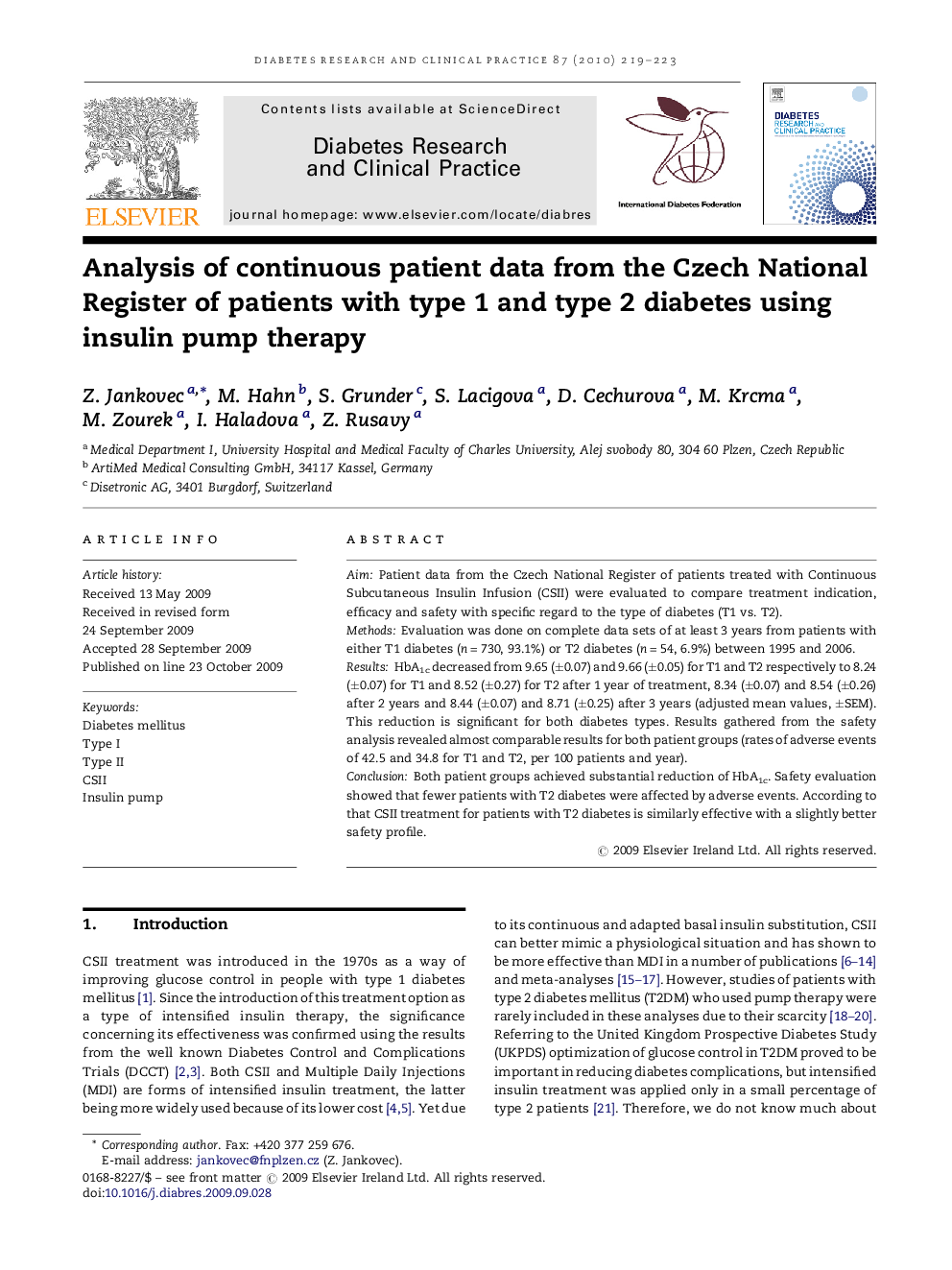| Article ID | Journal | Published Year | Pages | File Type |
|---|---|---|---|---|
| 2797671 | Diabetes Research and Clinical Practice | 2010 | 5 Pages |
AimPatient data from the Czech National Register of patients treated with Continuous Subcutaneous Insulin Infusion (CSII) were evaluated to compare treatment indication, efficacy and safety with specific regard to the type of diabetes (T1 vs. T2).MethodsEvaluation was done on complete data sets of at least 3 years from patients with either T1 diabetes (n = 730, 93.1%) or T2 diabetes (n = 54, 6.9%) between 1995 and 2006.ResultsHbA1c decreased from 9.65 (±0.07) and 9.66 (±0.05) for T1 and T2 respectively to 8.24 (±0.07) for T1 and 8.52 (±0.27) for T2 after 1 year of treatment, 8.34 (±0.07) and 8.54 (±0.26) after 2 years and 8.44 (±0.07) and 8.71 (±0.25) after 3 years (adjusted mean values, ±SEM). This reduction is significant for both diabetes types. Results gathered from the safety analysis revealed almost comparable results for both patient groups (rates of adverse events of 42.5 and 34.8 for T1 and T2, per 100 patients and year).ConclusionBoth patient groups achieved substantial reduction of HbA1c. Safety evaluation showed that fewer patients with T2 diabetes were affected by adverse events. According to that CSII treatment for patients with T2 diabetes is similarly effective with a slightly better safety profile.
